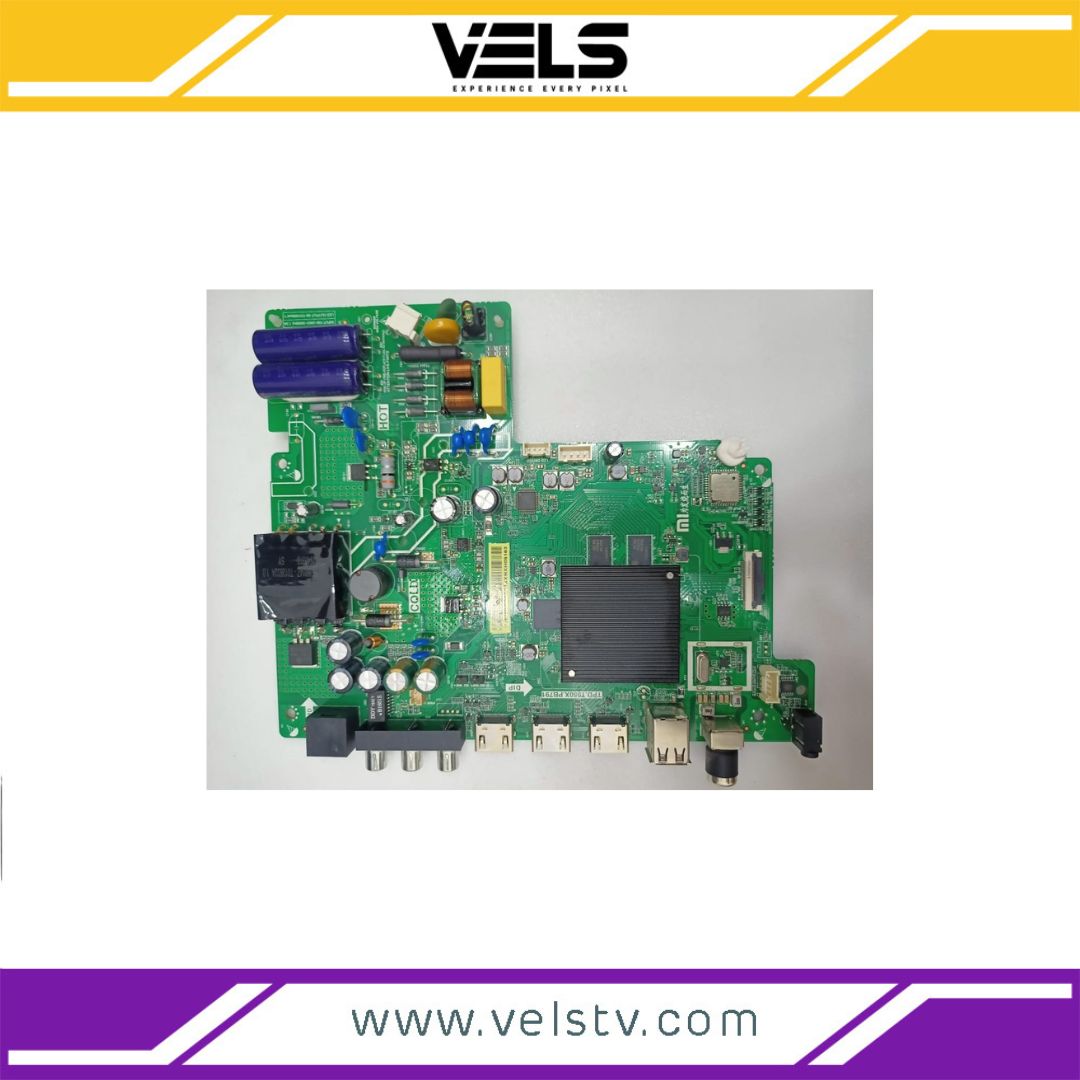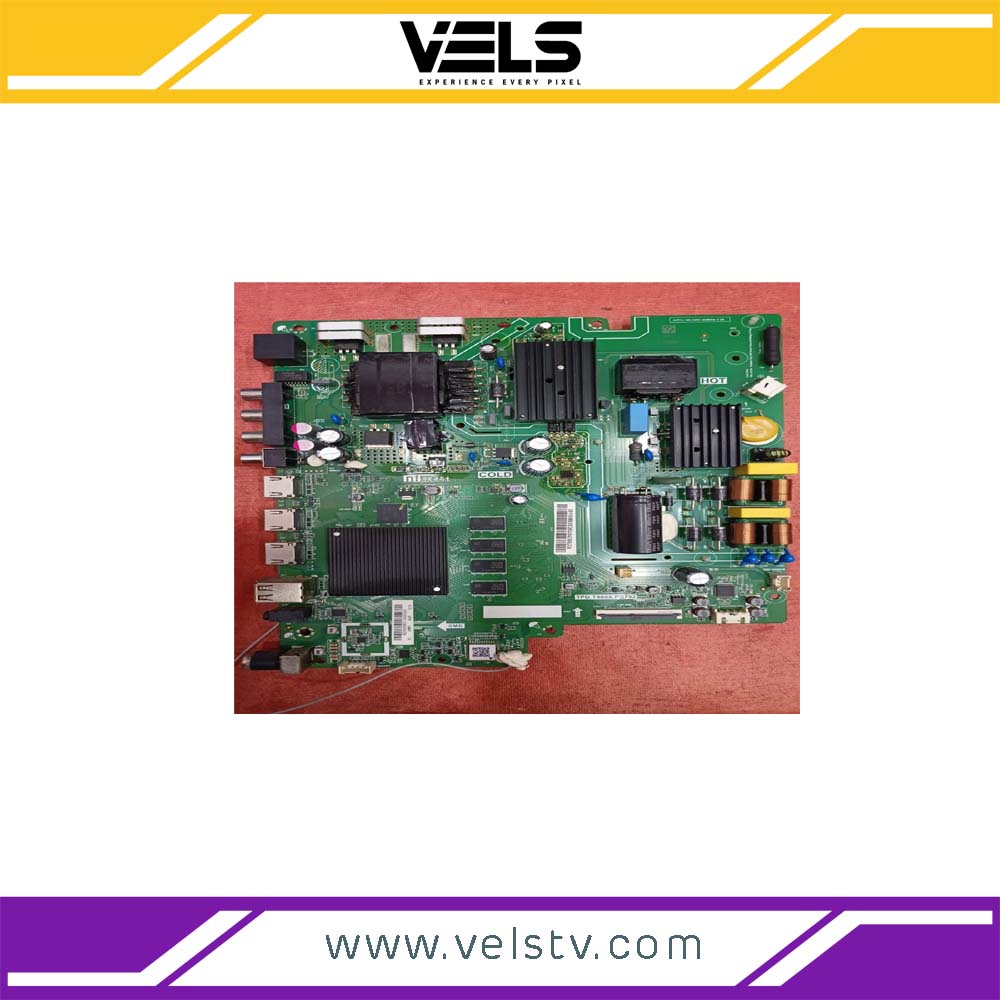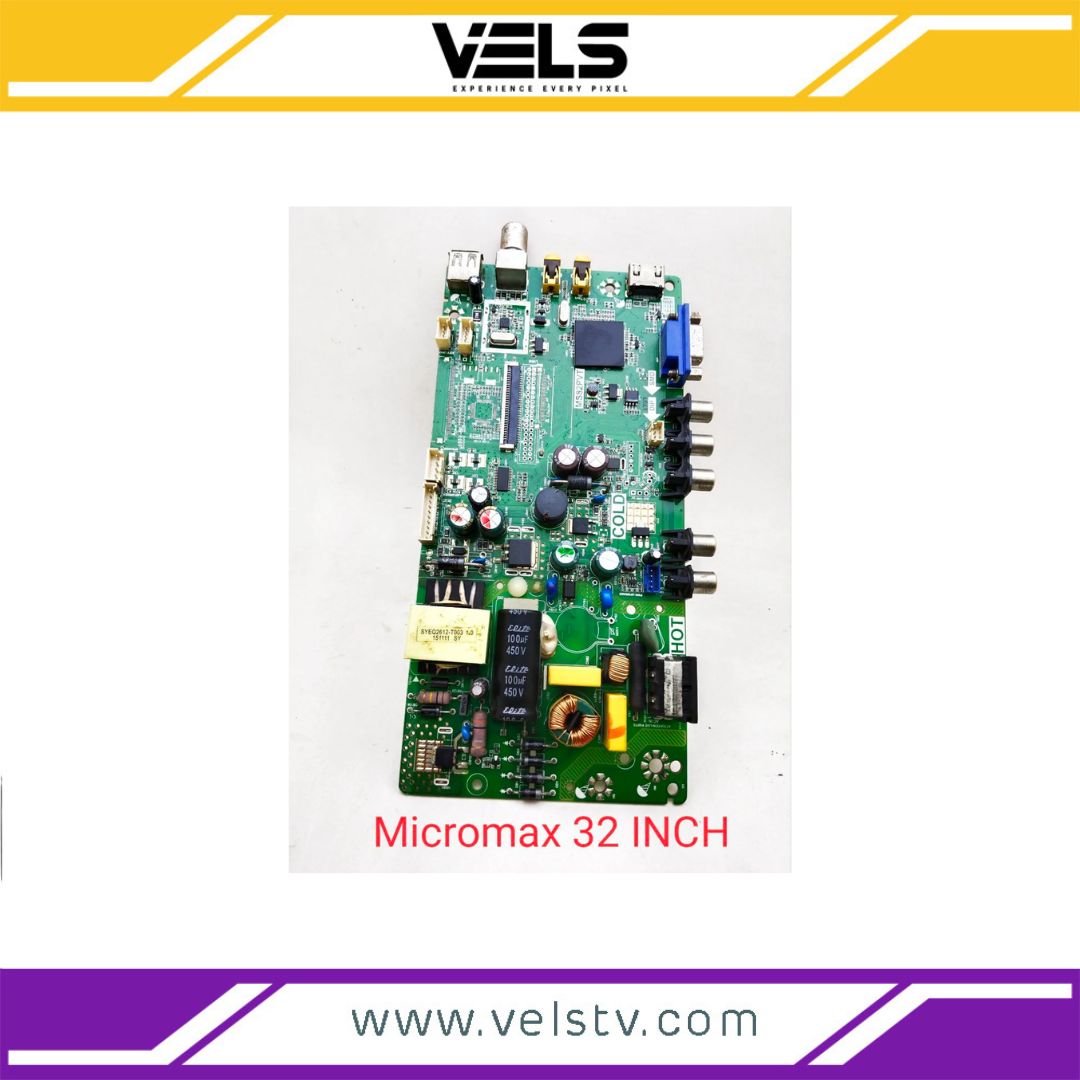The motherboard of the Micromax 40T2820FHD LED TV is the central component that manages all processing, control, and communication functions within the television. It integrates video and audio processing, power regulation, input/output management, and system control onto a single PCB (printed circuit board). This is known as a combo main board, commonly used in LED TVs to reduce space and manufacturing cost. The motherboard receives input signals from HDMI, USB, VGA, and AV ports, processes them through a built-in video processor, and outputs the final display signal via an LVDS interface to the panel’s T-Con (timing controller). It also includes an audio amplifier to power the TV’s internal speakers, typically rated at 8 watts per channel.
The board is powered by a 19V DC input and uses onboard regulators to step down the voltage to 12V, 5V, and 3.3V required by different components. It controls the LED backlight using PWM (pulse-width modulation) and ON/OFF signals, ensuring consistent brightness. A system-on-chip (SoC), typically manufactured by MStar or Realtek, handles core functions such as menu control, input switching, software interface (OSD), and signal decoding. Memory chips like NAND flash store firmware, while RAM buffers are used for real-time processing. The motherboard also includes a tuner section for analog or digital TV signals received via antenna.
Common symptoms of a faulty motherboard include no power, no display, backlight without video, HDMI ports not responding, or the TV being stuck in standby. In many cases, visible damage like swollen capacitors, shorted MOSFETs, or missing voltage rails can be traced to the motherboard. Replacement boards are generally available from third-party suppliers and are more cost-effective than repairing individual components unless precise chip-level repair skills are available


 Mi 43" l49m5-an motherboard
Mi 43" l49m5-an motherboard 















